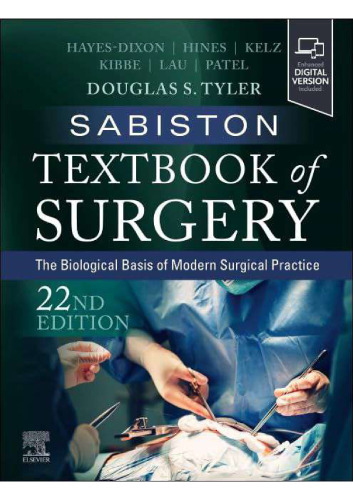For introductory Nutrition courses for Majors.
Move students beyond memorization with a functional approach to nutrition
The Science of Nutrition helps students master tough nutrition concepts while providing rich support to save instructors time. This best-selling, thoroughly current, research-based nutrition text is uniquely organized around the highly regarded functional approach, which organizes vitamins and minerals based on their functions within the body and is easily seen in the organization of the micronutrient (vitamin and mineral) chapters.
The 5th Edition includes the most up-to-date scientific research in the field of nutrition, an increased emphasis on nutrition and disease content, and new icons in the margins directing students to Oregon State University’s FoodHero.org. The text covers key concepts in nutrition with new and updated Focus Figures; updated Nutri-Case case studies; and Nutrition Concept Videos, which feature author Janice Thompson explaining difficult course concepts. Additionally, instructors can assign updated NutriTool activities and autogradable MyDietAnalysis Personalized Dietary Analysis activities in Mastering Nutrition
Also available as a Pearson eText or packaged with Mastering Nutrition:
Pearson eText is a simple-to-use, mobile-optimized, personalized reading experience that can be adopted on its own as the main course material. It lets students highlight, take notes, and review key vocabulary all in one place, even when offline. Seamlessly integrated videos and other rich media engage students and give them access to the help they need, when they need it. Educators can easily share their own notes with students so they see the connection between their eText and what they learn in class – motivating them to keep reading, and keep learning.
If your instructor has assigned Pearson eText as your main course material, search for:
013537152X / 9780135371527 Pearson eText The Science of Nutrition -- Access Card, 8/e
OR
0135371562 / 9780135371565 Pearson eText The Science of Nutrition -- Instant Access, 8/e
Also available with Mastering Nutrition
By combining trusted author content with digital tools and a flexible platform, Mastering personalizes the learning experience and improves results for each student.Mastering Nutrition includes single-sign-on access to MyDietAnalysis software to give students the tools to track their diet and activity and run reports on various macro- and micro-nutrients consumption.
If you would like to purchase both the physical text and Mastering Nutrition, search for:
0135183855 / 9780135183854 The Science of Nutrition Plus Mastering Nutrition with MyDietAnalysis and Pearson eText -- Access Card Package
Package consists of:
- 0134898672 / 9780134898674 The Science of Nutrition
- 0135180880 / 9780135180884 Mastering Nutrition with Pearson eText -- ValuePack Access Card -- for The Science of Nutrition
Note: You are purchasing a standalone book; Pearson eText and Mastering A&P do not come packaged with this content. Students, ask your instructor for the correct package ISBN and Course ID. Instructors, contact your Pearson representative for more information.
چکیده فارسی
برای دوره های مقدماتی تغذیه برای گرایش ها.
با رویکردی کاربردی به تغذیه، دانش آموزان را فراتر از حفظ کردن سوق دهید
علم تغذیه به دانشآموزان کمک میکند در مفاهیم سخت تغذیه تسلط پیدا کنند و در عین حال پشتیبانی غنی برای صرفهجویی در وقت مربیان ارائه میدهد. این پرفروشترین متن تغذیهای کاملاً جاری و مبتنی بر تحقیق به طور منحصربهفردی پیرامون رویکرد عملکردی بسیار مورد توجه سازماندهی شده است، که ویتامینها و مواد معدنی را بر اساس عملکرد آنها در بدن سازماندهی میکند و به راحتی در سازماندهی ریزمغذیها (ویتامین و مواد معدنی) دیده میشود. فصل ها.
نسخه پنجم شامل بهروزترین تحقیقات علمی در زمینه تغذیه، تأکید بیشتر بر تغذیه و محتوای بیماری، و نمادهای جدید در حاشیه است که دانشجویان را به دانشگاه ایالتی اورگان هدایت میکند. FoodHero.org. متن مفاهیم کلیدی در تغذیه را با فیگورهای تمرکز جدید و به روز پوشش می دهد. مطالعات موردی Nutri-Case به روز شده؛ و ویدئوهای مفهومی تغذیه، که شامل نویسنده جنیس تامپسون است که مفاهیم دشوار دوره را توضیح می دهد. بهعلاوه، مربیان میتوانند فعالیتهای NutriTool بهروز شده و فعالیتهای تجزیهوتحلیل غذایی شخصیشده MyDietAnalysis قابل ارتقا در Mastering Nutrition را اختصاص دهند
همچنین بهعنوان eText پیرسون یا بستهبندی شده با Mastering Nutrition موجود است:
Pearson eText یک تجربه ساده برای استفاده، بهینهسازی شده برای تلفن همراه و تجربه خواندن شخصی است که میتواند به تنهایی بهعنوان ماده درسی اصلی مورد استفاده قرار گیرد. این به دانشآموزان اجازه میدهد تا واژگان کلیدی را در یک مکان برجسته، یادداشت برداری و مرور کنند، حتی در حالت آفلاین. ویدئوهای یکپارچه و سایر رسانههای غنی دانشآموزان را درگیر میکنند و در صورت نیاز به کمکی که نیاز دارند دسترسی پیدا میکنند. مربیان می توانند به راحتی یادداشت های خود را با دانش آموزان به اشتراک بگذارند تا آنها ارتباط بین متن الکترونیکی خود و آنچه در کلاس یاد می گیرند را ببینند - آنها را تشویق می کند که به خواندن و ادامه یادگیری ادامه دهند.
اگر مدرس شما Pearson eText را به عنوان درس اصلی شما اختصاص داده است، عبارت:
را جستجو کنید
013537152X / 9780135371527 Pearson eText The Science of Nutrition -- Access Card, 8/e
OR
0135371562 / 9780135371565 Pearson eText علم تغذیه -- دسترسی فوری، 8/e
همچنین با Mastering Nutrition موجود است
با ترکیب محتوای نویسنده قابل اعتماد با ابزارهای دیجیتال و یک پلتفرم انعطافپذیر، مسترینگ تجربه یادگیری را شخصیسازی میکند و نتایج را برای هر دانشآموز بهبود میبخشد. Mastering Nutrition شامل دسترسی یکباره به نرمافزار MyDietAnalysis است تا به دانشآموزان ابزارهایی برای پیگیری رژیم غذایی و رژیم غذایی خود ارائه دهد. فعالیت و گزارش هایی را در مورد مصرف کلان و ریز مغذی های مختلف اجرا کنید.
اگر می خواهید هم متن فیزیکی و هم Mastering Nutrition را خریداری کنید، عبارت:
را جستجو کنید
0135183855 / 9780135183854 The Science of Nutrition Plus تسلط بر تغذیه با MyDietAnalysis و Pearson eText -- بسته کارت دسترسی
بسته شامل موارد زیر است:
- 0134898672 / 9780134898674 علم تغذیه
- 0135180880 / 9780135180884 تسلط بر تغذیه با Pearson eText -- کارت دسترسی ValuePack -- برای علم تغذیه
توجه: شما در حال خرید یک کتاب مستقل هستید. Pearson eText و Mastering A&P همراه با این محتوا نیستند. دانشجویان، از استاد خود ISBN و شناسه دوره صحیح را بخواهید. مربیان، برای اطلاعات بیشتر با نماینده Pearson خود تماس بگیرید.
ادامه ...
بستن ...
Ebook details:
عنوان: The Science of Nutrition (5th Edition)
نویسنده: Medicine & Health Science Books @ Amazon.com
ناشر: Pearson; 5 edition (January 14, 2019)
زبان: English
شابک: 0134898672, 978-0134898674
حجم: 408 Mb
فرمت: Image pdf with ocr
ادامه ...
بستن ...
Title Page
Copyright Page
Dedication Page
About the Authors
Acknowledgments
Brief Contents
Contents
1 The Science of Nutrition:Linking Food, Function, and Health
How Can You Interpret Research Study Results?
Research Involves Applying the Scientific Method
Focus Figure 1.5 The Scientific Method
Various Types of Research Studies Tell Us Different Stories
What Is the Science of Nutrition and How Did It Evolve?
How Does Nutrition Contribute to Health?
Nutrition Is One of Several Factors Supporting Wellness
A Healthful Diet Can Prevent Some Diseases and Reduce the Risk for Others
Focus Figure 1.2 The Relationship Between Nutrition and Human Disease
Healthy People 2020 Identifies Nutrition‐Related Goals for the United States
What Are Nutrients?
Three Macronutrients Provide Energy
Focus Figure 1.3 The Six Groups of Nutrients Found in Foods
Micronutrients Assist in the Regulation of Physiologic Processes
Water Supports All Body Functions
Foods Also Provide Beneficial Non‐Nutrient Compounds
What Are the Current Dietary Intake Recommendations and How Are They Used?
The Dietary Reference Intakes Identify a Healthy Person’s Nutrient Needs
Focus Figure 1.4 Dietary Reference Intakes (DRIs)
Diets Based on the Dietary Reference Intakes Promote Wellness
How Do Nutrition Professionals Assess Nutritional Status?
There Are Five Domains of Nutritional Status Assessment
A Finding of Malnutrition Requires Further Classification
How Can You Use Your Knowledge of Research to Evaluate Nutrition Claims?
Watch for Conflict of Interest and Bias
Evaluate the Quality of the Sources and Content of the Claims
Evaluate a Website’s Credibility
Which Sources of Nutrition Advice Are Trustworthy?
Trustworthy Experts Are Educated and Credentialed
Government Sources of Information Are Usually Trustworthy
Professional Organizations Provide Reliable Nutrition Information
Nutrition Myth or Fact? Nutrigenomics: Personalized Nutrition or Pie in the Sky?
StudyPlan Mastering Nutrition
2 Designing a Healthful Diet
What Is a Healthful Diet?
A Healthful Diet Is Adequate
A Healthful Diet Is Moderate
A Healthful Diet Is Nutrient Dense
A Healthful Diet Is Balanced
A Healthful Diet Is Varied
Focus Figure 2.1 Optimizing Nutrient Density
How Can Reading Food Labels Help You Improve Your Diet?
Five Components Must Be Included on Food Labels
Use the Nutrition Facts Panel to Evaluate and Compare Foods
Focus Figure 2.3 The Nutrition Facts Panel
Food Labels Can Display a Variety of Claims
How Do the Dietary Guidelines for Americans Promote a Healthful Diet?
The Five Guidelines Encourage a Healthful Eating Pattern
A Healthful Eating Pattern Has Key Components
A Healthful Eating Pattern Is Based on Three Underlying Principles
How Can the USDA Food Patterns Help You Design a Healthful Diet?
Log Onto MyPlate
Limit Empty Calories
Watch Your Serving Size
What Other Tools Can Help You Design a Healthful Diet?
A Mediterranean‐Style Eating Pattern Is Healthful
The Exchange System Can Help You Follow a Healthful Eating Pattern
Consider the Healthy Eating Plate or the Power Plate
Get Some High‐Tech Help
Can Eating Out Be Part of a Healthful Diet?
Eating Out Can Have Hidden Costs
There Are Many Healthful Ways to Eat Out
Nutrition Myth or Fact? Nutrition Advice from the U.S. Government: Is Anyone Listening?
StudyPlan Mastering Nutrition
3 The Human Body: Are We Really What We Eat?
Why Do We Feel the Urge to Eat?
The Hypothalamus Prompts Hunger in Response to Various Signals
Environmental Cues Trigger Appetite
What Happens to the Food We Eat?
Focus Figure 3.4 Digestion Overview
Digestion Begins in the Mouth
The Esophagus Propels Food into the Stomach
The Stomach Mixes, Digests, and Stores Food
Most Digestion and Absorption Occurs in the Small Intestine
The Large Intestine Stores Food Waste Until It Is Excreted
How Does the Body Accomplish Chemical Digestion?
Enzymes and Hormones Play Roles in Digestion
Accessory Organs Produce, Store, and Secrete Chemicals Involved in Digestion
How Does the Body Absorb and Transport Digested Nutrients?
A Specialized Lining Enables the Small Intestine to Absorb Nutrients
Four Types of Absorption Occur in the Small Intestine
Focus Figure 3.15 Small Intestine Structure/Function
Blood and Lymph Transport Nutrients and Wastes
How Does the Neuromuscular System Support the Gastrointestinal System?
The Muscles of the Gastrointestinal Tract Mix and Move Food
Nerves Control the Contractions and Secretions of the Gastrointestinal Tract
What Disorders Are Related to Digestion, Absorption, and Elimination?
Belching and Flatulence Are Common
Heartburn and Gastroesophageal Reflux Disease (GERD) Are Caused by Reflux of Gastric Juice
A Peptic Ulcer Is an Area of Erosion in the GI Tract
Gallstones Are Deposits in the Gallbladder
Some People Experience Disorders Related to Specific Foods
Vomiting Can Be Acute or Chronic
Crohn’s Disease and Colitis Are Inflammatory Bowel Diseases
Diarrhea, Constipation, and Irritable Bowel Syndrome Are Functional Disorders
Cancer Can Develop in Any Part of the Gastrointestinal System
Nutrition Myth or Fact? Should You Grow Your Microbiome?
StudyPlan Mastering Nutrition
4 Carbohydrates: Plant‐Derived Energy Nutrients
What Are Carbohydrates?
Simple Carbohydrates Include Monosaccharides and Disaccharides
Oligosaccharides and Polysaccharides Are Complex Carbohydrates
How Does the Body Process Carbohydrates?
Digestion Breaks Down Most Carbohydrates into Monosaccharides
Focus Figure 4.6 Carbohydrate Digestion Overview
The Liver Converts Most Non‐Glucose Monosaccharides into Glucose
Fiber Is Excreted from the Large Intestine
How Does the Body Regulate Blood Glucose Levels?
Insulin and Glucagon Regulate Blood Glucose Levels
Focus Figure 4.8 Regulation of Blood Glucose
Fructose Does Not Stimulate Insulin Release
Other Hormones Increase Blood Glucose Levels
The Glycemic Index Shows How Foods Affect Our Blood Glucose Levels
Why Do We Need Carbohydrates?
Carbohydrates Provide Energy for Daily Activities and Exercise
Carbohydrates Spare Protein and Prevent Ketoacidosis
Fiber Helps Us Stay Healthy
How Much Total Carbohydrate and Added Sugar Should We Eat?
The RDA for Total Carbohydrate Reflects Glucose Use by the Brain
Most Americans Eat Too Much Added Sugar
Sugars Are Blamed for Many Health Problems
How Much Fiber Do We Need, and What Are the Best Sources?
Whole Grains Are Excellent Sources of Fiber
Other Good Sources of Fiber Are Vegetables, Fruits, Nuts, and Seeds
Focus Figure 4.16 Maximizing Fiber Intake
What’s the Story on Alternative Sweeteners?
Limited Use of Alternative Sweeteners Is Not Harmful
The Effect of Artificial Sweeteners on Weight Management Is Unclear
What Disorders Are Related to Carbohydrate Metabolism?
Diabetes Is Impaired Regulation of Glucose
Diabetes Damages Blood Vessels
There Are Two Main Forms of Diabetes
Focus Figure 4.20 Diabetes
Three Blood Tests Are Used to Diagnose Diabetes
You Can Reduce Your Risk for Type 2 Diabetes
Dietary Counseling Can Help People Living with Diabetes
Hypoglycemia Is Low Blood Glucose
Lactose Intolerance Is an Inability to Digest Lactose
Nutrition Myth or Fact? Are Added Sugars the Cause of the Obesity Epidemic?
StudyPlan Mastering Nutrition
4.5 inDEPTH Alcohol
What Is Alcohol and How Is It Metabolized?
Fermentation of Sugar Yields Alcohol
Alcohol Is Metabolized in the Stomach and Liver
What Do We Know about Moderate Alcohol Intake?
Moderate Alcohol Intake Can Offer Certain Health Benefits
Moderate Alcohol Intake Is a Concern for Some People
What Are Two Alcohol Use Disorders?
Alcohol Abuse Endangers Health, Functioning, or Relationships
Alcohol Dependence Is a Disease
What Are the Effects of Alcohol Use Disorders?
Alcohol Hangovers
Reduced Brain Function
Alcohol Poisoning
Reduced Liver Function
Increased Risk for Chronic Disease
Malnutrition
Increased Risk for Traumatic Injury
Fetal and Infant Health Problems
How Can You Take Control of Your Alcohol Intake?
Try These Personal Strategies
Assess Your Alcohol Intake
Get Help
How Can You Talk to Someone about Their Alcohol Use?
5 Lipids: Essential Energy‐Supplying Nutrients
What Are Lipids?
Triglycerides Are the Most Common Food‐Based Lipid
Phospholipids Combine Lipids with Phosphate
Sterols Have a Ring Structure
Why Are Some Triglycerides Better than Others?
Fatty Acid Chain Length Affects Digestion and Absorption
Level of Hydrogen Saturation Influences Health Effects
Carbon Bonding Influences Shape
Trans Fatty Acids Are Especially Harmful
Essential Fatty Acids Have Unique Health Benefits
How Does the Body Process Lipids?
The Gallbladder, Liver, and Pancreas Assist in Fat Digestion
Focus Figure 5.8 Lipid Digestion Overview
Absorption of Lipids Occurs Primarily in the Small Intestine
Fat Is Stored in Adipose Tissues for Later Use
Why Do We Need Lipids?
Lipids Supply Energy When We Are at Rest
Lipids Fuel Physical Activity
Body Fat Provides Stored Energy and Protection
Dietary Fat Enables the Transport of Fat‐Soluble Vitamins
Lipids Help Maintain Many Cell Functions
Fats Contribute to the Flavor and Texture of Foods
How Much Dietary Fat Should We Eat?
Total Fat Intake Should Stay Within the AMDR
Aim for a Balance of the Essential Fatty Acids
Limit Saturated Fats
Avoid Trans Fatty Acids
Avoid Excessive Dietary Cholesterol
Meal Focus Figure 5.14 Reducing Saturated Fat
How Can You Choose the Most Healthful Fats?
Eat More Sustainable Fish
Pick Plants
Don’t Let the Fats Fool You!
Watch Out When You’re Eating Out!
Be Aware of Fat Replacers
Fat Blockers Contribute Minimally to Weight Loss
What Role Do Lipids Play in Cardiovascular Disease?
Cardiovascular Disease Involves the Heart or Blood Vessels
Focus Figure 5.16 Atherosclerosis
Many Risk Factors for Cardiovascular Disease Are Modifiable
Blood Lipid Levels Are Linked to Cardiovascular Disease Risk
Focus Figure 5.18 Lipoprotein Transport and Distribution
Lifestyle Changes Can Prevent or Reduce the Risk for Cardiovascular Disease
Prescription Medications Can Reduce Cardiovascular Disease Risk
What Role Do Lipids Play in Cancer?
Nutrition Myth or Fact? Are Saturated Fats Bad or Benign?
StudyPlan Mastering Nutrition
6 Proteins: Crucial Components of All Body Tissues
What Are Proteins?
The Building Blocks of Proteins Are Amino Acids
The Body Can Synthesize Only Some Amino Acids
How Are Proteins Made?
Amino Acids Bond to Form a Variety of Peptides
Genes Regulate Amino Acid Binding
Protein Turnover Involves Synthesis and Degradation
Protein Organization Determines Function
Focus Figure 6.6 Protein Synthesis
Protein Denaturation Affects Shape and Function
Protein Synthesis Can Be Limited by Missing Amino Acids
Protein Synthesis Can Be Enhanced by Mutual Supplementation
How Does the Body Process Proteins?
Stomach Acids and Enzymes Break Proteins Into Short Polypeptides
Enzymes in the Small Intestine Break Polypeptides Into Single Amino Acids
Focus Figure 6.11 Protein Digestion Overview
Protein Digestibility Affects Protein Quality
Why Do We Need Proteins?
Proteins Contribute to Cell Growth, Repair, and Maintenance
Proteins Act as Enzymes and Hormones
Proteins Help Maintain Fluid and Electrolyte Balance
Proteins Help Maintain Acid–Base Balance
Proteins Help Maintain a Strong Immune System
Proteins Serve as an Energy Source
Proteins Assist in the Transport and Storage of Nutrients
Proteins Are Critical to Nerve Function, Blood Clotting, and Wound Healing
How Much Protein Should We Eat?
Nitrogen Balance Is a Method Used to Determine Protein Needs
The RDA May Not Meet Everyone’s Protein Needs
Most Americans Meet or Exceed the RDA for Protein
Meal Focus Figure 6.16 Choosing Nutrient‐Dense Proteins
The Health Effects of High Protein Intake Are Unclear
How Can You Choose the Most Healthful Proteins?
Legumes Are a Key Source of Plant Protein
Nuts Are a Healthful High‐Protein Food
Quorn and Ancient Grains Are “New” Protein‐Rich Foods
Protein and Amino Acid Supplements Don’t Live Up to Their Hype
Can a Vegetarian Diet Provide Adequate Protein?
There Are Many Types of Vegetarian Diets
People Choose Vegetarianism for Many Different Reasons
A Vegetarian Diet Can Present Some Challenges
MyPlate Can Help You Plan a Vegetarian Diet
What Disorders Are Related to Protein Intake or Metabolism?
Protein Deficiency Can Result in Severe Illness and Death
Numerous Disorders Are Related to Genetic Defects
Nutrition Myth or Fact? Are Current Protein Recommendations High Enough?
StudyPlan Mastering Nutrition
7 Metabolism: From Food to Life
Why Is Metabolism Essential for Life?
Anabolism and Catabolism Require or Release Energy
Energy Stored in Adenosine Triphosphate Fuels the Work of All Body Cells
What Chemical Reactions Are Fundamental to Metabolism?
Dehydration Synthesis and Hydrolysis Reactions Involve Water
Focus Figure 7.4 Overview of Metabolism
In Phosphorylation Reactions, Molecules Exchange Phosphate
In Oxidation–Reduction Reactions, Molecules Exchange Electrons
Enzymes Mediate Metabolic Reactions
How Is Energy Extracted From Carbohydrates?
In Glycolysis, Glucose Is Broken Down Into Pyruvate
In the Absence of Oxygen, Pyruvate Is Converted to Lactate
In the Presence of Oxygen, Pyruvate Is Converted to Acetyl CoA
The TCA Cycle Begins With the Entry of Acetyl CoA
Oxidative Phosphorylation Captures Energy as ATP
How Is Energy Extracted From Fats?
Glycerol Is Converted to Pyruvate
Fatty Acids Are Converted to Acetyl CoA
Fatty Acids Cannot Be Converted to Glucose
Ketones Are a By‐Product of Fat Catabolism
How Is Energy Extracted From Proteins?
In Proteolysis, Proteins Are Broken Down to Amino Acids
In Oxidative Deamination, the Amino Group Is Removed
After Deamination, the Carbon Skeleton Feeds Into Energy Production
Excess Protein Is Stored as Fat
Ammonia Is a By‐Product of Protein Catabolism
How Is Alcohol Metabolized?
Alcohol Is Metabolized Through Oxidation
Oxidation of Alcohol Begins in the Stomach
Oxidation of Alcohol Continues in the Liver
How Is Energy Stored?
The Energy of Dietary Glucose Is Stored as Muscle and Liver Glycogen
The Energy of Dietary Triglycerides Is Stored as Adipose Tissue
The Energy of Dietary Proteins Is Found as Circulating Amino Acids
How Are Key Nutrient Compounds Synthesized?
Gluconeogenesis Is the Synthesis of Glucose
Lipogenesis Is the Synthesis of Fatty Acids
Cholesterol Is Synthesized From Acetyl CoA
Transamination Allows Synthesis of Nonessential Amino Acids
What Hormones Regulate Metabolism?
How Do Feeding and Fasting Affect Metabolism?
Feeding Is an Anabolic State
Focus Figure 7.28a Metabolic Response to Feeding
Short‐Term Fasting Stimulates Catabolism
Prolonged Starvation Triggers Dramatic Changes in Metabolism
Focus Figure 7.28b Metabolic Response to Fasting
Nutrition Myth or Fact? “Speed Up Your Metabolism!” Is It Just a Dream?
StudyPlan Mastering Nutrition
7.5 inDEPTH Vitamins and Minerals: Micronutrients with Macro Powers
How Were the Micronutrients Discovered?
How Are Vitamins Classified?
Vitamins Are Classified According to Their Solubility
The Same Vitamin Can Have Different Names and Forms
How Are Minerals Classified?
Minerals Are Classified According to Intake Requirements
The Same Mineral Can Have Different Forms
How Do Our Bodies Use Micronutrients?
What We Eat Differs From What We Absorb
What We Eat Differs From What Our Cells Use
What Are Some Controversies in Micronutrient Metabolism?
Are Supplements Healthful Sources of Micronutrients?
Meal Focus Figure 1 Maximizing Micronutrients
Can Micronutrients Prevent or Treat Chronic Disease?
Do More Essential Micronutrients Exist?
8 Nutrients Involved in Energy Metabolism
How Does the Body Regulate Energy Metabolism?
The Body Requires Vitamins and Minerals to Produce Energy
Some Micronutrients Assist with Nutrient Transport and Hormone Production
How Do Thiamin, Riboflavin, and Niacin Assist in Energy Metabolism?
Thiamin (Vitamin B1) Contributes to Carbohydrate and Protein Metabolism
Riboflavin (Vitamin B2) Supports Carbohydrate, Protein, and Fat Metabolism
Niacin Is Essential to Carbohydrate, Protein, and Fat Metabolism
How Do Vitamin B6, Folate, and Vitamin B12 Support Energy Metabolism?
Vitamin B6 (Pyridoxine) Is Critical for Amino Acid Metabolism
Folate Assists Amino Acid Metabolism
Vitamin B12 (Cobalamin) Supports DNA Synthesis and Homocysteine Metabolism
What Are the Roles of Pantothenic Acid, Biotin, and Choline in Energy Metabolism?
Pantothenic Acid Supports Metabolism of Fatty Acids
Biotin Is Involved in Carbohydrate, Protein, and Fat Metabolism
Choline Is Important in Lipid Metabolism and Transport
How Do Minerals Help Regulate Energy Metabolism?
Iodine Is a Component of Thyroid Hormones
Chromium Enhances Glucose Transport
Manganese Plays Many Roles in Metabolism
Sulfur Is a Component of Thiamin and Biotin
Does B‐Vitamin Intake Influence the Body’s Capacity for Physical Activity?
Nutrition Myth or Fact? Treating Premenstrual Syndrome With Vitamin B6 and Folic Acid: Does It Wor
StudyPlan Mastering Nutrition
9 Nutrients Involved in Fluid and Electrolyte Balance
What Is Body Fluid?
Body Fluid Is the Liquid Portion of Cells and Tissues
Body Fluid Is Composed of Water and Solutes
Why Do We Need Water and Electrolytes?
Water Performs Functions Critical to Life
Electrolytes Support Many Body Functions
Focus Figure 9.5 Fluid and Electrolyte Balance
How Does the Body Maintain Fluid Balance?
We Gain Fluids Through Consumption and Metabolism
We Lose Fluids Through Urine, Sweat, Evaporation, Exhalation, and Feces
How Does the Body Maintain Acid–Base Balance?
How Much Water Should We Drink, and What Are the Best Sources?
Our Requirements for Water Are Individualized
Public Tap Water Is Safe to Drink
All Beverages Are Not Created Equal
How Do Four Major Minerals Contribute to Fluid Balance?
Sodium Is the Body’s Major Extracellular Cation
Potassium Is the Body’s Major Intracellular Cation
Chloride Is the Body’s Major Extracellular Anion
Phosphorus Is the Body’s Major Intracellular Anion
What Disorders Are Related to Fluid and Electrolyte Imbalances?
Dehydration Develops as Fluid Loss Exceeds Fluid Intake
Dehydration Increases the Risk for Heat Illnesses
Overhydration Is Also Dangerous
One‐Third of Americans Have Hypertension
Electrolyte Imbalances Can Cause Seizures
Kidney Disorders Commonly Affect Body Fluids
Congestive Heart Failure May Be Managed With Fluid Restriction
Nutrition Myth or Fact? Low Sodium Diets: Fit for All or Just a Few?
StudyPlan Mastering Nutrition
10 Nutrients Involved in Antioxidant Function and Vision
What Are Antioxidants and How Does the Body Use Them?
Oxidation Is a Chemical Reaction in Which Atoms Lose Electrons
Free Radicals Can Destabilize Other Molecules and Damage Cells
Antioxidants Work by Stabilizing Free Radicals or Opposing Oxidation
What Makes Vitamin E a Key Antioxidant?
There Are Several Forms of Vitamin E
Vitamin E Donates an Electron to Free Radicals
How Much Vitamin E Should We Consume?
Why Is Vitamin C Critical to Health and Functioning?
Vitamin C Helps Synthesize Tissues and Functional Compounds
Vitamin C Acts as an Antioxidant and Boosts Absorption of Iron
How Much Vitamin C Should We Consume?
What Minerals Act in Antioxidant Enzyme Systems?
Selenium Is a Critical Component of the Glutathione Peroxidase Enzyme System
Copper, Iron, Zinc, and Manganese Assist in Antioxidant Function
What Is Beta‐Carotene, and What Are Its Roles in the Body?
Beta‐Carotene Is a Provitamin
Beta‐Carotene Has Antioxidant Properties
How Much Beta‐Carotene Should We Consume?
How Does Vitamin A Support Vision and Other Functions?
There Are Three Active Forms of Vitamin A
Vitamin A Is Essential to Sight
Focus Figure 10.17 Vitamin A’s Role in Vision
Vitamin A Supports Cell Differentiation, Reproduction, and Bone Growth
Vitamin A Derivatives Are Effective in Treating Acne
How Much Vitamin A Should We Consume?
How Is Cancer Related to Free‐Radical Damage?
Cancer Is a Group of Diseases Characterized by Cells Growing Out of Control
Cancer Develops in Three Stages
A Variety of Factors Influence Cancer Risk
Antioxidants Play a Role in Reducing Cancer Risk
Early Diagnosis and Treatment Improves Prognosis
What Role Does Free Radical Damage Play in Cardiovascular Disease?
Nutrition Myth or Fact? Phytochemicals: Another Advantage of Plants?
StudyPlan Mastering Nutrition
10.5 inDEPTH The Safety and Effectiveness of Dietary Supplements
How Are Dietary Supplements Regulated?
Are There Special Precautions for Herbs?
Should You Take a Micronutrient Supplement?
11 Nutrients Involved in Bone Health
How Does the Body Maintain Bone Health?
The Composition of Bone Provides Strength and Flexibility
The Constant Activity of Bone Tissue Promotes Bone Health
How Do We Assess Bone Health?
Why Is Calcium Critical to Healthy Bone?
Calcium Plays Many Roles Critical to Body Functioning
Calcium Bioavailability Varies
Focus Figure 11.5 Regulation of Blood Calcium
How Much Calcium Should We Consume?
How Does Vitamin D Contribute to Bone Health?
Vitamin D Has Many Regulatory Functions
Vitamin D Synthesis Requires Sunlight
How Much Vitamin D Do We Need?
How Does Vitamin K Help Maintain Bone Health?
Vitamin K Serves as a Coenzyme Contributing to Bone Health
How Much Vitamin K Should We Consume?
How Do Phosphorus, Magnesium, and Fluoride Support Bone Health?
Phosphorus Is Part of the Mineral Complex of Bone
Magnesium Builds Bone and Helps Regulate Calcium Balance
Fluoride Helps Develop and Maintain Teeth and Bones
Why Is Osteoporosis Harmful, and What Are the Risk Factors and Treatments?
Osteoporosis Contributes to Fractures and Other Complications
A Variety of Factors Influence Osteoporosis Risk
Certain Treatments Can Slow Bone Loss
Nutrition Myth or Fact? Preserving Bone Mass: Are Supplements the Solution?
StudyPlan Mastering Nutrition
12 Nutrients Involved in Blood Health and Immunity
What Are the Functions and Components of Blood?
Why Is Iron Essential to Blood Health?
Iron Transports Oxygen
The Body Tightly Regulates Iron Homeostasis
How Much Iron Should We Consume?
How Does Zinc Support Blood Health?
Zinc Has Enzymatic, Structural, and Regulatory Functions
Several Factors Influence Zinc Absorption and Transport
How Much Zinc Should We Consume?
What Is the Role of Copper in Blood Health?
Copper Functions in Blood Health and Energy Metabolism
Several Factors Influence Copper Absorption and Transport
How Much Copper Should We Consume?
What Vitamins Help Maintain Blood Health?
Vitamin K Assists in the Synthesis of Clotting Factors
Vitamin B6 Is Essential for the Synthesis of Heme
Folate Is Essential for the Production of Red Blood Cells
Vitamin B12 Is Necessary for the Proper Formation of Red Blood Cells
What Is the Immune System, and How Does It Function?
Nonspecific Immunity Protects Against All Potential Invaders
Specific Immunity Protects Against Identified Antigens
How Does Nutrition Affect the Immune System?
Infection Can Cause Loss of Energy and Micronutrients
Protein–Energy Malnutrition Impairs Immune Function
Obesity Increases the Incidence and Severity of Infections
Essential Fatty Acids Make Signaling Molecules for the Immune System
Certain Vitamins and Minerals Are Critical to a Strong Immune Response
The GI Flora Contribute to Immune Health
Nutrition Myth or Fact? Do Zinc Lozenges Help Fight the Common Cold?
StudyPlan Mastering Nutrition
13 Achieving and Maintaining a Healthful Body Weight
What Is a Healthful Body Weight?
How Can You Evaluate Your Body Weight?
Determine Your Body Mass Index (BMI)
Measure Your Body Composition
Assess Your Fat Distribution Patterns
How Does Energy Balance Influence Body Weight?
Focus Figure 13.4 Energy Balance
Energy Intake Is the Kilocalories We Consume Each Day
Energy Expenditure Includes More Than Just Physical Activity
Research Suggests Limitations of the Energy Balance Equation
What Factors Influence Body Weight?
Genes Influence Body Weight in Different Ways
Metabolic Factors Influence Weight Loss and Gain
Physiologic Factors Influence Body Weight
Sociocultural Factors Affect Food Choices and Body Weight
What Makes Obesity Harmful, and Why Does It Occur?
Obesity Is Linked to Chronic Diseases and Premature Death
Multiple Factors Contribute to Obesity
Focus Figure 13.7 Complexities of the Contributors to Obesity
Obesity Does Respond to Diet and Exercise
Weight Loss Can Be Enhanced With Prescription Medications
Many Supplements Used for Weight Loss Contain Stimulants
Surgery Can Be Used to Treat Morbid Obesity
How Can You Lose Weight Safely and Keep It Off?
Avoid Fad Diets
Many Diets Focus on Macronutrient Composition
If You Design Your Own Diet Plan, Include the Three Strategies
Meal Focus Figure 13.9 Managing Calorie Intake
What If You Need to Gain Weight?
For Safe and Effective Weight Gain, Choose Nutrient‐Dense Foods
Amino Acid and Protein Supplements Do Not Increase Muscle Mass
Nutrition Myth or Fact? High‐Carbohydrate, Moderate‐Fat Diets—Have They Been Oversold?
StudyPlan Mastering Nutrition
14 Nutrition and Physical Activity: Keys to Good Health
What Are the Benefits of Physical Activity?
Physical Activity Increases Our Fitness
Physical Activity Reduces Our Risk for Chronic Diseases
How Much Physical Activity Is Enough?
Many Americans Are Inactive
Three Sets of National Guidelines Recommend Varying Levels of Physical Activity
How Can You Improve Your Fitness?
Assess Your Current Level of Fitness
Identify Your Personal Fitness Goals
Make Your Program Varied, Consistent, and Fun!
Appropriately Overload Your Body
Include a Warm‐Up and a Cool‐Down Period
Keep It Simple, Take It Slow
What Fuels Physical Activity?
The ATP–CP Energy System Uses Creatine Phosphate to Regenerate ATP
The Breakdown of Carbohydrates Provides Energy for Both Brief and Long‐Term Exercise
Focus Figure 14.7 What Fuels Our Activities?
Aerobic Breakdown of Fats Supports Exercise of Low Intensity and Long Duration
Amino Acids Are Not Major Sources of Fuel During Exercise
How Does Physical Activity Affect Energy and Macronutrient Needs?
Vigorous Exercise Increases Energy Needs
Meal Focus Figure 14.10 Energy for Athletes: Meeting High Energy Demands
Carbohydrate Needs Increase for Many Active People
Moderate Fat Consumption Is Enough to Support Most Activities
Many Athletes Have Increased Protein Needs
How Does Physical Activity Affect Fluid and Micronutrient Needs?
Physical Activity Increases the Risk for Dehydration and Heat Illnesses
Adequate Fluid Replacement Is Critical Before, During, and After Exercise
Inadequate Micronutrient Intake Can Diminish Health and Performance
Nutrition Myth or Fact? Are Ergogenic Aids Necessary for Active People?
StudyPlan Mastering Nutrition
14.5 inDEPTH Disorders Related to Body Image, Eating, and Exercise
What Is Body Image, and How Does It Influence Health?
Body Image Influences Eating Behaviors
Body Image Influences Exercise Behaviors
Body Dysmorphic Disorder Is a Psychiatric Diagnosis
What Factors Contribute to Disorders Related to Body Image, Eating, and Exercise?
Influence of Genetic Factors
Influence of Family
Influence of Personality and Comorbidities
Influence of Media
Influence of Sociocultural Factors
What Psychiatric Eating Disorders Are Recognized?
Anorexia Nervosa Involves Self‐Starvation
Bulimia Nervosa Involves Binging and Purging
Binge‐Eating Disorder Commonly Leads to Weight Gain
What Syndromes of Disordered Eating and Exercise Are Recognized?
Otherwise Specified Feeding and Eating Disorders (OSFED) Are Emerging Syndromes
Relative Energy Deficiency in Sport Involves Energy Imbalance
How Are Eating Disorders Treated?
Inpatient and Outpatient Treatment Is Available
Discussing the Problem Can Help
15 Food Safety and Technology: Protecting Our Food
What Is Foodborne Illness and Why Is It a Critical Concern?
Ingestion of Contaminants Prompts Acute Illness
Reducing Foodborne Illness Is a Challenge
What Causes Most Foodborne Illness?
Several Types of Microorganisms Contaminate Foods
Some Foodborne Illness Is Due to Toxins
Certain Conditions Help Microorganisms Multiply in Foods
How Can You Prevent Foodborne Illness?
Clean: Wash Your Hands and Kitchen Surfaces Often
Separate: Don’t Cross‐Contaminate
Chill: Store Foods in the Refrigerator or Freezer
Cook: Heat Foods Thoroughly
Protect Yourself from Toxins in Foods
Be Choosy When Eating Out—Close to Home or Far Away
How Is Food Spoilage Prevented?
What Are Food Additives, and Are They Safe?
Food Additives Include Nutrients and Preservatives
Other Food Additives Include Flavorings, Colorings, and Other Agents
Are Food Additives Safe?
How Is Genetic Modification Used in Food Production?
What Are Food Residues and How Do They Harm Our Health?
Persistent Organic Pollutants Can Cause Serious Illness
Persistent Organic Pollutants Include a Broad Range of Substances
Pesticides Protect Against Crop Losses—But at a Cost
Growth Hormones and Antibiotics Are Used in Animals
Are Organic Foods Worth the Cost?
To Be Labeled Organic, Foods Must Meet Federal Standards
Organic Foods Are Safer but Not Necessarily More Nutritious
Nutrition Myth OR Fact? Genetically Modified Foods: A Blessing or a Curse?
StudyPlan Mastering Nutrition
16 Food Equity, Sustainability, and Quality: The Challenge of “Good” Food
How Prevalent Is Food Insecurity?
About 815 Million People Worldwide Are Hungry
Over 17 Million American Households Are Food Insecure
Why Don’t All People Have Access to Nourishing Food?
Acute Food Shortages Are Often Caused by Weather Events and Wars
The Major Cause of Chronic Hunger Is Unequal Distribution of Food
Overpopulation Contributes to Chronic Food Shortages
Local Conditions Can Contribute to Chronic Hunger
Climate Change Threatens Global Food Security
What Problems Are Linked to Undernourishment?
Low Energy Intake Promotes Wasting, Stunting, and Mortality
Micronutrient Deficiencies Lead to Preventable Diseases
Undernourishment Promotes Socioeconomic Problems
How Could Limited Access to Nourishing Food Promote Obesity?
A Double Burden of Malnutrition Is Evident in Transitioning Populations
Physical and Socioeconomic Factors May Promote Obesity Among the Poor
Is Our Food Equitably Produced and Sold?
Farm Labor Is Dangerous and Poorly Paid
Food Retail and Service Work Maintains the “Working Poor”
How Does Industrial Agriculture Affect the Security, Sustainability, and Diversity of Our Food Suppl
Industrial Agriculture Has Increased Food Security but Threatens Our Environment
Monopolization of Agriculture Reduces Food Diversity
The Food Industry Influences America’s Diet
What Initiatives Are Addressing the Challenges of Good Food?
Many International Initiatives Increase Access to Nourishing Food
National and Local Programs Help Nourish Americans
Sustainable Agriculture Reduces Environmental Impact and Increases Food Diversity
Corporate and Philanthropic Initiatives Are Promoting Good Food
What Can You Do to Promote Good Food?
Support Food Security
Purchase Fair Trade Goods
Choose Foods That Are Healthful for You and the Environment
Nutrition Myth or Fact? Meat Consumption and Climate Change: Tofu to the Rescue?
StudyPlan Mastering Nutrition
17 Nutrition Through the Life Cycle: Pregnancy and the First Year of Life
Why Is Nutrition Important Before Conception?
How Does Nutrition Support Fetal Development?
The First Trimester Is Characterized by Cell Multiplication and Tissue Differentiation
During the Second and Third Trimesters, Most Growth Occurs
Appropriate Weight Gain Is Essential
What Are a Pregnant Woman’s Nutrient Needs?
Macronutrients Provide Energy and Build Tissues
Micronutrients Support Increased Energy Needs and Tissue Growth
Fluid Needs of Pregnant Women Increase
What Are Some Common Nutrition‐Related Concerns of Pregnancy?
Some Disorders of Pregnancy Are Related to Nutrition
Maternal Age Can Affect Pregnancy
A Careful Vegetarian Diet Is Safe During Pregnancy
Exercise Is Recommended for Most Pregnant Women
Certain Substances Can Harm the Fetus
How Does Nutrition Support Lactation?
Lactation Is Maintained by Hormones and Infant Suckling
Breastfeeding Women Have High Nutrient Needs
Meal Focus Figure 17.11 Meeting The Nutrient Needs of Breastfeeding Women
What Are Some Advantages and Challenges of Breastfeeding?
Breast Milk Is Nutritionally Superior to Infant Formula
Breastfeeding Has Many Other Benefits for the Infant and Mother
Physical and Social Concerns Can Make Breastfeeding Challenging
What Are an Infant’s Nutrient Needs?
Nutrition Fuels Infant Growth and Activity
Infants Have Unique Nutrient Needs
Infant Formula Is a Nutritious Alternative to Breast Milk
What Are Some Common Nutrition‐Related Concerns of Infancy?
Infants Begin to Need Solid Foods Around 6 Months of Age
Some Foods and Beverages Are Not Safe for Infants
Some Infants Develop Disorders or Distress Related to Food and Feeding
Nutrition Myth or Fact? The Fetal Environment: Does It Leave a Lasting Impression?
StudyPlan Mastering Nutrition
18 Nutrition Through the Life Cycle: Childhood and Adolescence
What Are a Toddler’s Nutrient Needs?
As Activity Expands, More Energy Is Needed
Toddlers’ Micronutrient Needs Increase
Adequate Fluid Is Critical
What Are Some Common Nutrition‐Related Concerns of Toddlerhood?
Food Choices Should Be Appropriate, Nutritious, and Fun
New Foods Should Be Introduced Gradually
Vegetarian Diets Should Be Planned with Care
Toddlers Should Be Monitored for Lead Toxicity
What Are a Child’s Nutrient Needs?
Childhood Growth and Activity Boosts Energy and Nutrient Needs
Micronutrient Recommendations for Children Increase
Children Need Five to Eight Cups of Fluid per Day
What Are Some Common Nutrition‐Related Concerns of Childhood?
Parents Can Model Nutritious Food Choices
Iron‐Deficiency Anemia Affects Many Children
Millions of American Children Experience Food Insecurity and Hunger
How Does School Attendance Affect Children’s Nutrition?
School Attendance Can Reduce Intake of Nourishing Foods
School Attendance Can Boost Children’s Access to Nourishing Foods
What Are an Adolescent’s Nutrient Needs?
Adolescence Is a Period of Dramatic Change
Adolescents’ Nutrient Needs Reflect Their Rapid Growth
What Are Some Common Nutrition‐Related Concerns of Adolescence?
Most Adolescents Choose Their Own Foods
Body Image and Eating Disorders Often Emerge During Adolescence
Dietary Choices May Influence Acne Risk
Substance Abuse Has Nutritional Implications
What Makes Pediatric Obesity Harmful, and Why Does It Occur?
Pediatric Obesity Leads to Serious Health Problems
Pediatric Obesity Is Multifactorial
Can Pediatric Obesity Be Prevented or Treated?
A Healthful Diet Can Help Prevent Pediatric Obesity
An Active Lifestyle Can Help Prevent Pediatric Obesity
Pediatric Obesity Does Respond to Treatment
Nutrition Myth or Fact? Bariatric Surgery for Adolescents: Is It the Answer?
StudyPlan Mastering Nutrition
19 Nutrition Through the Life Cycle: The Later Years
What Are the Demographics of Aging?
The American Population Is Aging
Life Expectancy Has Increased Dramatically in the Last Century
Why Do We Age?
Two Theories Attempt to Explain Aging
Some Lifestyle Factors Accelerate Aging
How Do We Age?
Sensory Perception Declines
Gastrointestinal Function Changes
Body Composition Changes
Changes in Tissues and Organs Reduce Functioning
What Are an Older Adult’s Nutrient Needs?
Older Adults Have Lower Energy Needs
Macronutrient Recommendations Are Similar for Adults of All Ages
Some Micronutrient Recommendations Vary for Older Adults
Fluid Recommendations Are the Same for All Adults
What Nutrition‐Related Concerns Threaten the Health of Older Adults?
Both Obesity and Underweight Are Serious Concerns
Millions of Older Adults Have Osteoporosis, Osteoarthritis, or Gout
Constipation Is a Common Concern
Dental Health Is Important for Adequate Nutrition
Many Vision Disorders Are Related to Aging
Age‐Related Cognitive Impairment Is Not Inevitable
Poor Nutrition Increases the Risk for Pressure Ulcers
Drug‐Diet Interactions Can Be Harmful
What Social Concerns Affect the Nutrition of Older Adults?
Many Older Adults Experience Elder Abuse and Neglect
Food Insecurity Affects over 10 Million Older Americans
Social Isolation Increases Health Risks
Community Services Can Help Meet the Nutritional Needs of Older Adults
Nutrition Myth or Fact? Can We Live Longer in Good Health by Eating a Low‐Energy Diet?
StudyPlan Mastering Nutrition
Appendices
A Metabolism Pathways and Biochemical Structures
B Chemistry Review
C Anatomy and Physiology Review
D Calculations and Conversions
E Foods Containing Caffeine
F Stature‐for‐Age Charts
G The USDA Food Guide Evolution
References
Answers to Review Questions
Glossary
Index
Credits
Graphs and Charts
ادامه ...
بستن ...
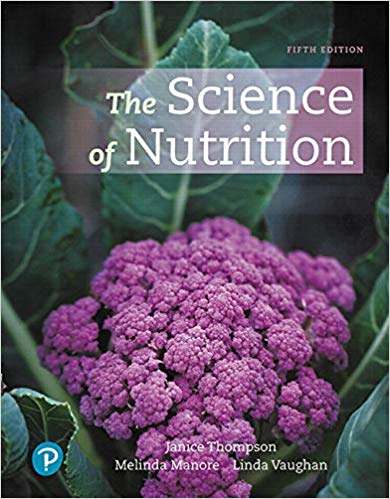
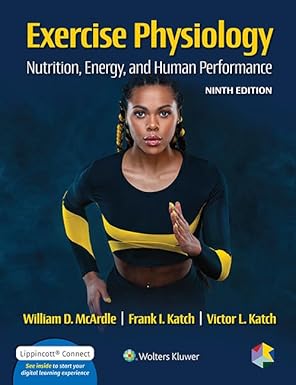
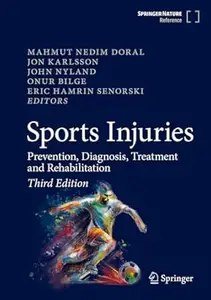


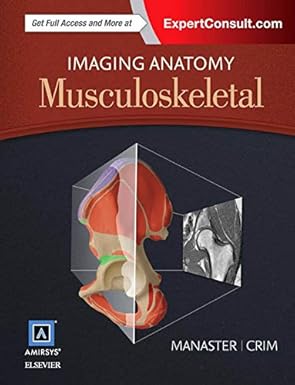
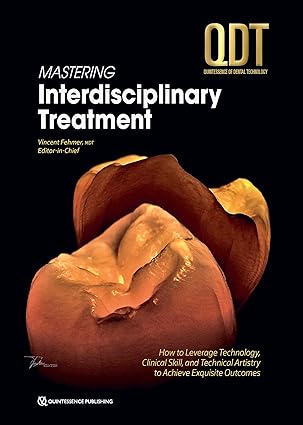
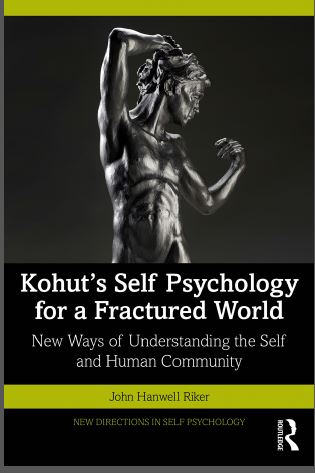

![Clinical Management of Swallowing Disorders (6th Edition) [2025] - Orginal Pdf Clinical Management of Swallowing Disorders (6th Edition) [2025] - Orginal Pdf](https://dl.libsan.ir/images/1/12/Clinical Management of Swallowing Disorders_68fdc2997972e.webp)
